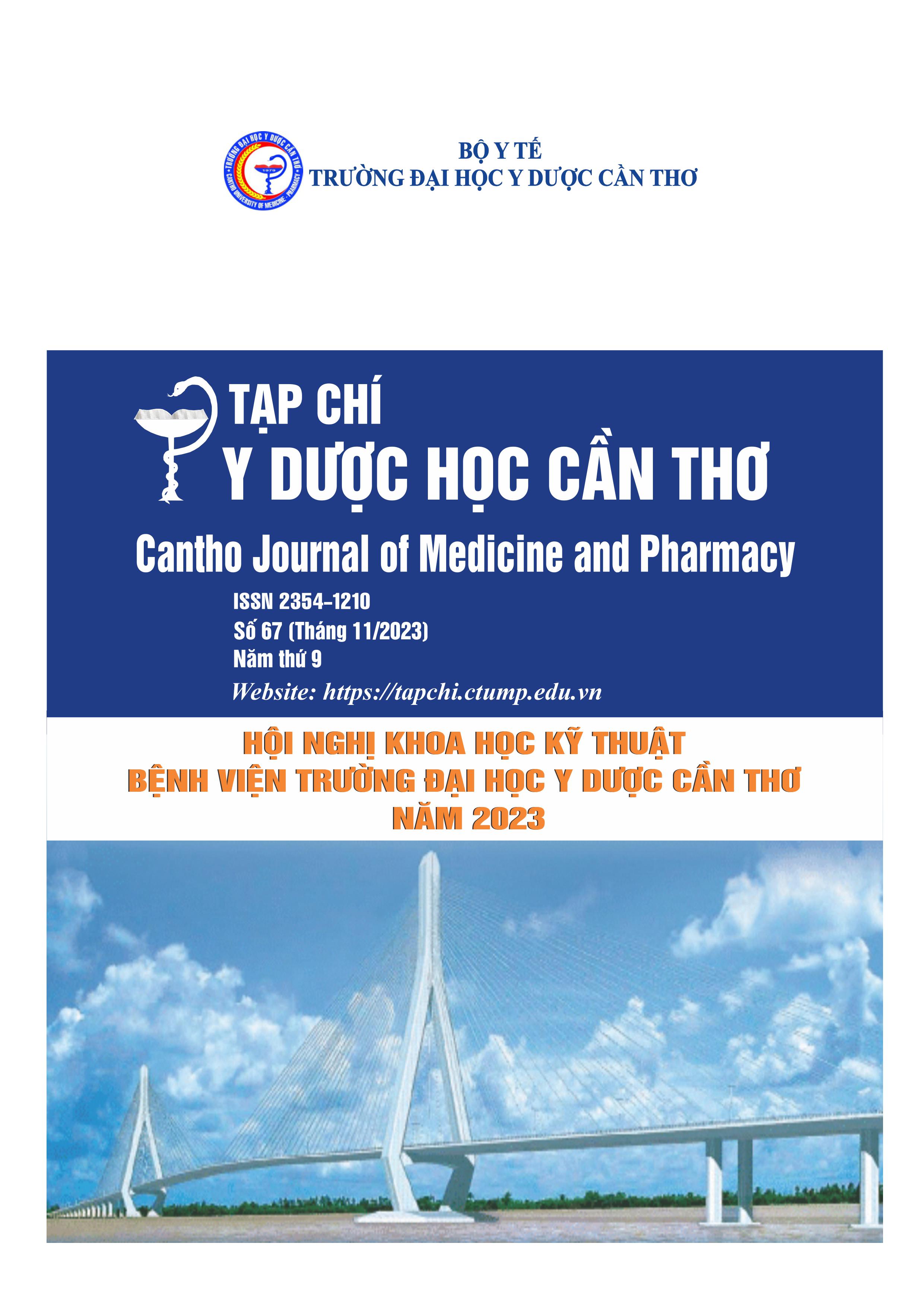CẬP NHẬT SỬ DỤNG KHÁNG SINH TRONG NHIỄM KHUẨN GRAM ÂM ĐA KHÁNG THEO HƯỚNG DẪN CỦA IDSA 2023
Nội dung chính của bài viết
Tóm tắt
Theo Tổ chức Y tế thế giới (WHO), đề kháng kháng sinh (antibiotic resistance - AMR) là một trong 10 mối đe dọa sức khỏe cộng đồng toàn cầu mà nhân loại phải đối mặt. Tại Việt Nam, hầu hết các cơ sở khám, chữa bệnh đang phải đối mặt với tốc độ lan rộng các vi khuẩn kháng với nhiều loại kháng sinh và đã xuất hiện các vi khuẩn kháng với hầu hết kháng sinh, còn gọi là vi khuẩn siêu kháng thuốc. Ngày 06/07/2023, Hiệp hội bệnh truyền nhiễm Hoa kỳ (Infectious Diseases Society of America – IDSA) tiếp tục cập nhật các khuyến cáo về điều trị nhiễm khuẩn do các chủng Gram âm đa kháng thuốc. Hướng dẫn tập trung vào các giải pháp lựa chọn các kháng sinh ưu tiên và thay thế trong điều trị các chủng Enterobacterales sản xuất β-lactamase phổ rộng (ESBL-E), Enterobacterales sản xuất AmpC β-lactamase (AmpC-E), Enterobacterales kháng Carbapenem (CRE), Pseudomonas aeruginosa đa kháng khó điều trị (DTR-P. aeruginosa), Acinetobacter baumannii kháng Carbapenem (CRAB) và Stenotrophomonas maltophilia. Hướng dẫn được áp dụng cho cả người lớn và trẻ em.
Chi tiết bài viết
Từ khóa
Kháng kháng sinh, nhiễm khuẩn gram âm đa kháng, IDSA
Tài liệu tham khảo
2. Centers for Disease Control and Prevention. Antibiotic Resistance Threats in the United States 2019. Centers for Disease Control and Prevention. 2019. http://dx.doi.org/10.15620/cdc:82532.
3. Tamma PD, Aitken SL, Bonomo RA, Mathers AJ, van Duin D, Clancy CJ. Infectious Diseases Society of America Antimicrobial-Resistant Treatment Guidance: Gram-Negative Bacterial Infections. Infectious Diseases Society of America. 2023. DOI: 10.1093/cid/ciad428
4. Tamma PD, Smith TT, Adebayo A, et al. Prevalence of blaCTX-M Genes in Gram-Negative Bloodstream Isolates across 66 Hospitals in the United States. J Clin Microbiol. 2021. 59(6). DOI: 10.1128/JCM.00127-21
5. Castanheira M, Kimbrough JH, DeVries S, Mendes RE, Sader HS. Trends of beta-Lactamase Occurrence Among Escherichia coli and Klebsiella pneumoniae in United States Hospitals
During a 5-Year Period and Activity of Antimicrobial Agents Against Isolates Stratified by beta-
Lactamase Type. Open Forum Infect Dis. 2023. 10(2). DOI: 10.1093/ofid/ofad038
6. Bush K, Bradford PA. Epidemiology of beta-Lactamase-Producing Pathogens. Clin Microbiol Rev. 2020. 33(2). DOI: 10.1128/CMR.00047-19
7. Chou A, Welch E, Hunter A, Trautner BW. Antimicrobial Treatment Options for Difficult-toTreat Resistant Gram-Negative Bacteria Causing Cystitis, Pyelonephritis, and Prostatitis: A Narrative Review. Drugs. 2022. 82(4), 407-438. DOI: 10.1007/s40265-022-01676-5
8. Tamma PD, Rodríguez-Baño J. The Use of Noncarbapenem beta-Lactams for the Treatment of Extended-Spectrum beta-Lactamase Infections. Clin Infect Dis. 2017. 64(7), 972-980. DOI: 10.1093/cid/cix034
9. Tamma PD, Doi Y, Bonomo RA, Johnson JK, Simner PJ, Antibacterial Resistance Leadership G. A Primer on AmpC beta-Lactamases: Necessary Knowledge for an Increasingly Multidrugresistant World. Clin Infect Dis. 2019. 69(8), 1446-1455. DOI: 10.1093/cid/ciz173
10. Tan SH, Ng TM, Chew KL, et al. Outcomes of treating AmpC-producing Enterobacterales bacteraemia with carbapenems vs. non-carbapenems. Int J Antimicrob Agents. 2020. 55(2). DOI: 10.1016/j.ijantimicag.2019.105860
11. Sabour S, Huang Y, Bhatnagar A, et al. Detection and Characterization of Targeted
Carbapenem-Resistant Healthcare-Associated Threats: Findings from The Antibiotic Resistance Laboratory Network, 2017 to 2019. Antimicrob Agents Chemother. 2021. 65. DOI: 10.1128/AAC.01105-21
12. Horwich-Scholefield S, Lloyd T, Varghese V, Yette E, Huang S, Pandori M. ImipenemRelebactam Susceptibility and Genotypic Characteristics of Carbapenem-Resistant Enterobacterales (CRE) Identified during Population-Based Surveillance. Antimicrob Agents Chemother. 2021. DOI: 10.1128/AAC.02288-20
13. Shields RK, Stellfox ME, Kline EG, Samanta P, Van Tyne D. Evolution of ImipenemRelebactam Resistance Following Treatment of Multidrug-Resistant Pseudomonas aeruginosa Pneumonia. Clin Infect Dis. 2022. 75(4), 710-714. DOI: 10.1093/cid/ciac097
14. O'Donnell JN, Putra V, Lodise TP. Treatment of patients with serious infections due to carbapenem-resistant Acinetobacter baumannii: How viable are the current options? Pharmacotherapy. 2021. 41, 762-780. DOI: 10.1002/phar.2607
15. Karaba SM, Goodman KE, Amoah J, Cosgrove SE, Tamma PD. StenoSCORE: Predicting Stenotrophomonas maltophilia Bloodstream Infections in the Hematologic Malignancy Population. Antimicrob Agents Chemother. 2021. 65(8). doi: 10.1128/AAC.00793-21


